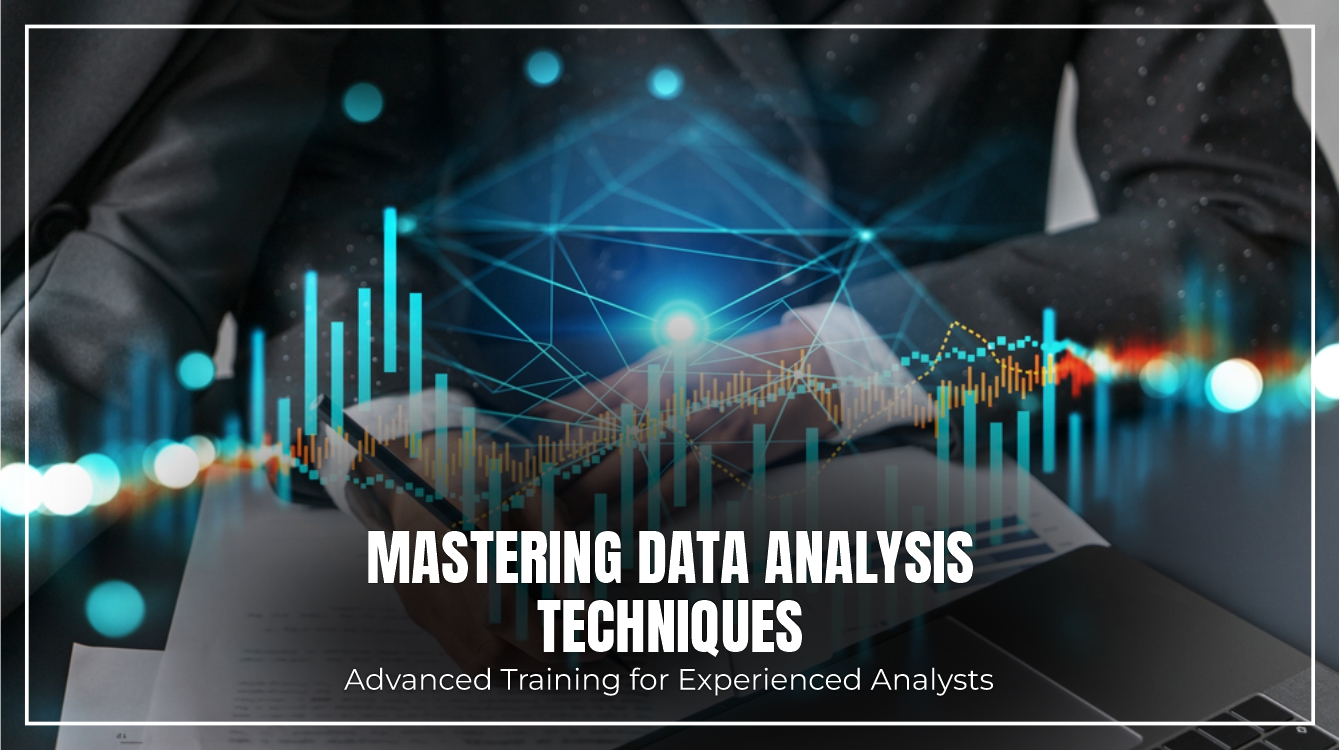Mastering Data Analysis Techniques: Advanced Training for Experienced Analysts




In the dynamic landscape of today's data-driven world, organisations are continually seeking professionals with the expertise to interpret and analyse vast amounts of data. Mastering data analysis techniques is essential for experienced data analysts looking to stay ahead in their field. Advanced data analysis training not only sharpens their skills but also equips them to tackle complex challenges and extract meaningful insights from diverse datasets.
This article delves into the world of advanced data analysis techniques, covering essential tools, methodologies, and industry trends. Whether you're a seasoned data analyst looking to upskill or an aspiring expert aiming to advance your career, this guide will provide valuable insights to propel you to new heights in the realm of data analysis.
Data analysis serves as the foundation for data-driven decision-making. It empowers organisations to identify patterns, trends, and correlations that can influence strategic choices, enhance operational efficiency, and gain a competitive edge. Advanced data analysis takes this process to a whole new level, enabling analysts to navigate complex data scenarios and uncover hidden insights that traditional methods may miss.
With the advent of big data, machine learning, and artificial intelligence, the ability to harness advanced data analysis techniques has become more critical than ever. This sophisticated analysis empowers organisations to predict customer behaviour, optimise marketing campaigns, streamline supply chain operations, and optimise resource allocation effectively.
Machine learning algorithms, such as decision trees, random forests, support vector machines, and neural networks, play a vital role in advanced data analysis techniques. These algorithms enable analysts to create predictive models, classification systems, and anomaly detection mechanisms that can make accurate forecasts and identify patterns within datasets.
NLP allows analysts to extract valuable insights from unstructured data sources, such as customer reviews, social media comments, and text documents. By leveraging NLP techniques, experienced data analysts can analyse sentiments, conduct topic modelling, and gain a deeper understanding of customer preferences and market trends.
Time series analysis helps data analysts comprehend temporal patterns in data, making it invaluable for forecasting, trend identification, and anomaly detection. Seasonal decomposition, auto-regressive integrated moving average (ARIMA), and exponential smoothing are among the popular time series analysis methods.
Presenting complex data analysis results in a visually appealing and easy-to-understand manner is crucial. Data visualisation tools like Tableau, Power BI, and Python's Matplotlib enable data analysts to create interactive charts, graphs, and dashboards that aid in communicating insights effectively.
Network analysis allows analysts to study the relationships between various entities in a network, such as social networks or computer networks. It helps data analysts in understanding the flow of information, identifying key influencers, and detecting vulnerabilities.
Augmented analytics combines machine learning and AI algorithms with data analysis to automate data preparation, visualisation, and insights generation. This trend reduces human biases, improves accuracy, and empowers analysts to focus on strategic decision-making tasks.
As data privacy concerns intensify, privacy-preserving data analysis techniques are gaining traction. These methods enable analysts to derive insights from sensitive data without compromising individual privacy, making them essential in compliance-heavy industries like healthcare and finance.
Explainable AI aims to provide transparent and interpretable results from AI and machine learning models. This trend is crucial for industries where understanding the reasoning behind AI-driven decisions is critical, such as healthcare, finance, and autonomous vehicles.
Mastering data analysis techniques is an indispensable skill for experienced data analysts seeking to excel in the rapidly evolving world of data-driven decision-making. With advanced data analysis training, professionals can explore cutting-edge tools, techniques, and trends that unlock the full potential of data analysis. From machine learning algorithms and natural language processing to privacy-preserving methods and explainable AI, embracing these advancements enhances the value analysts bring to their organisations. As data continues to grow in complexity and volume, the mastery of advanced data analysis becomes a key differentiator in gaining a competitive edge and driving innovation across industries. Embrace the power of advanced data analysis techniques, and open the door to a world of boundless possibilities in the realm of data science.
To pursue advanced data analysis training, professionals should have a strong foundation in statistics, programming languages like Python or R, and basic data analysis concepts. Experience in handling large datasets and a curiosity to explore complex data scenarios are also beneficial.
Advanced data analysis techniques empowers businesses to make more informed and data-driven decisions. It allows organisations to identify patterns and trends that traditional analysis may miss, leading to optimised operations, targeted marketing strategies, improved customer experiences, and enhanced overall efficiency.
Advanced data analysis techniques find applications in various industries, including finance, healthcare, e-commerce, marketing, manufacturing, and cybersecurity. From fraud detection to personalised medicine and predictive maintenance, these techniques offer valuable insights that drive success in these sectors.
Some emerging trends in data analysis include augmented analytics, which automates insights generation through machine learning and AI, privacy-preserving data analysis techniques for maintaining data privacy, and explainable AI, providing interpretable results for AI-driven decisions in critical industries like healthcare and finance.